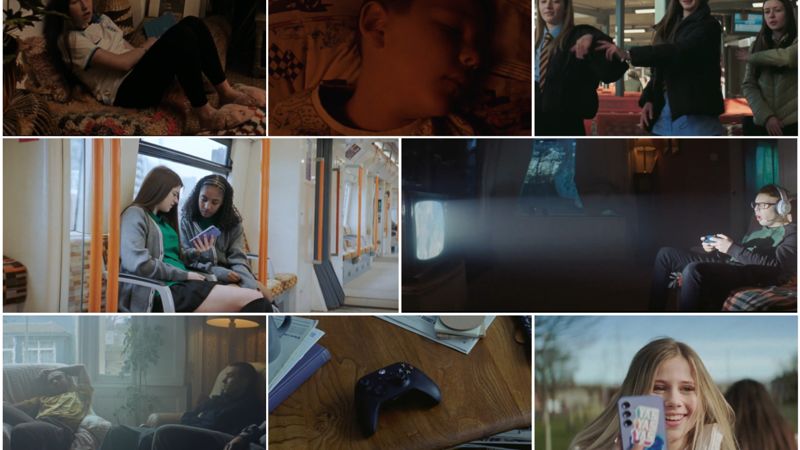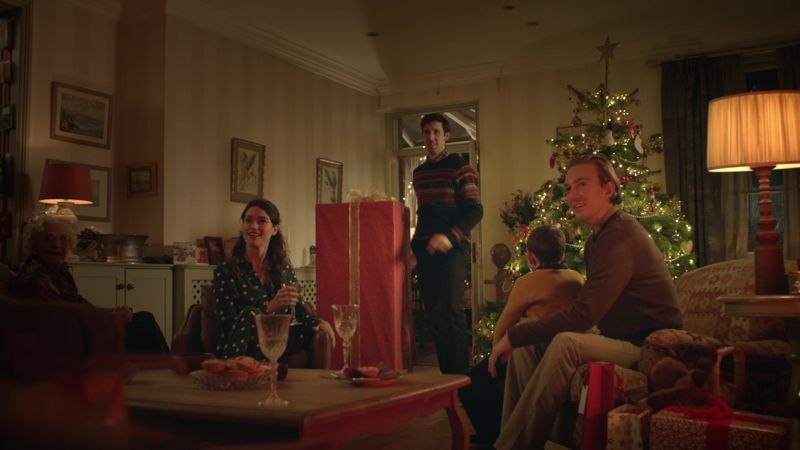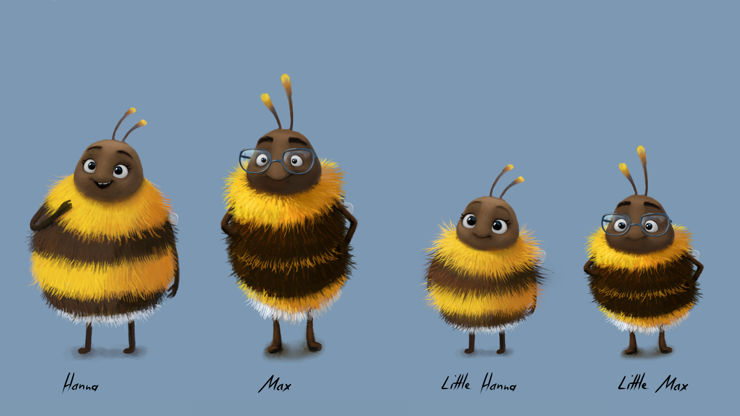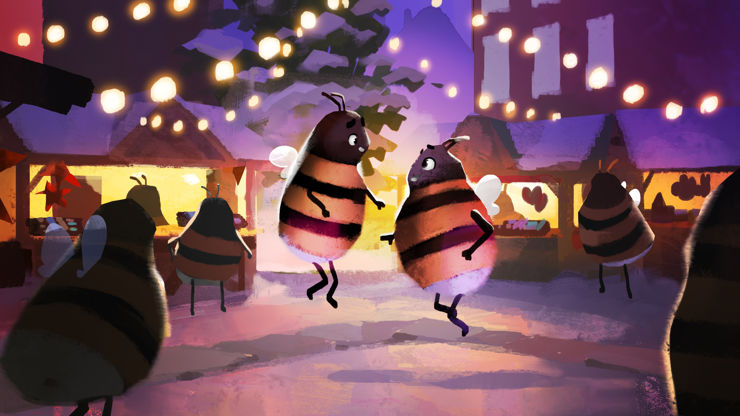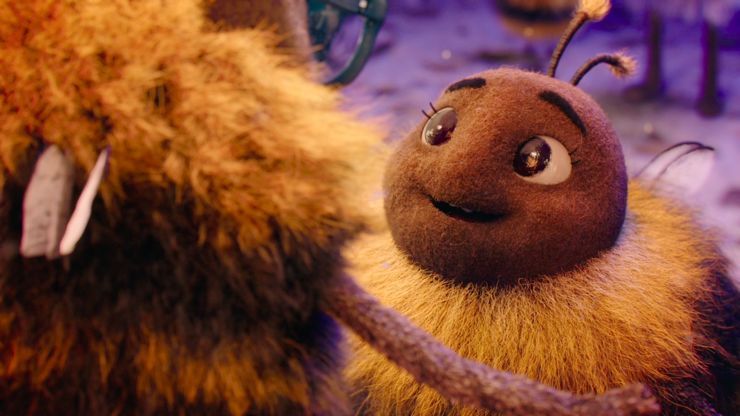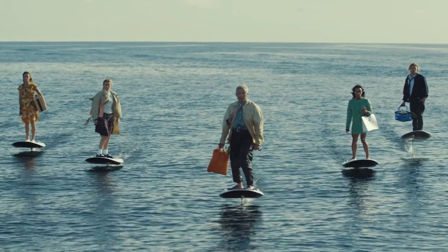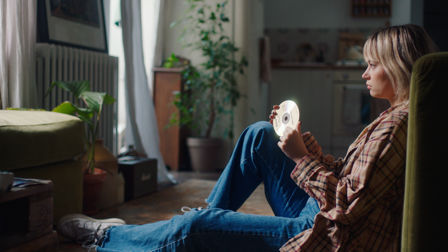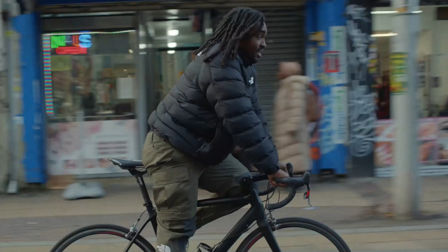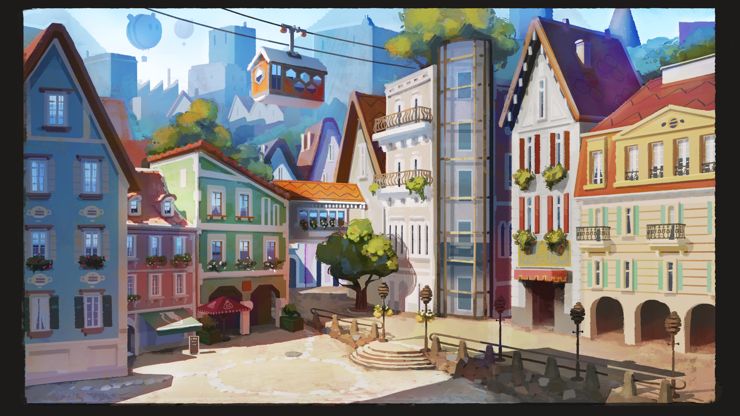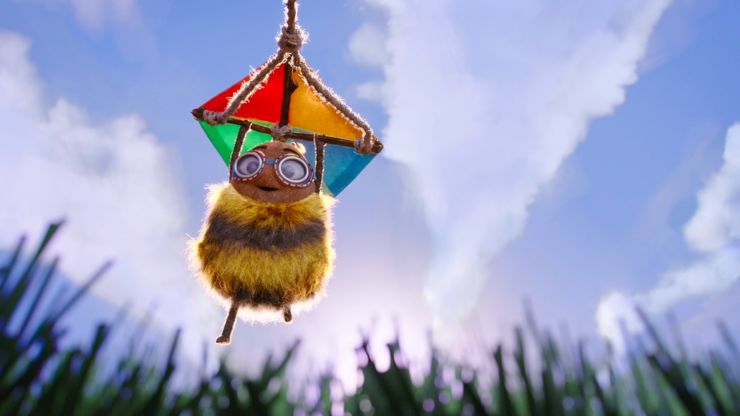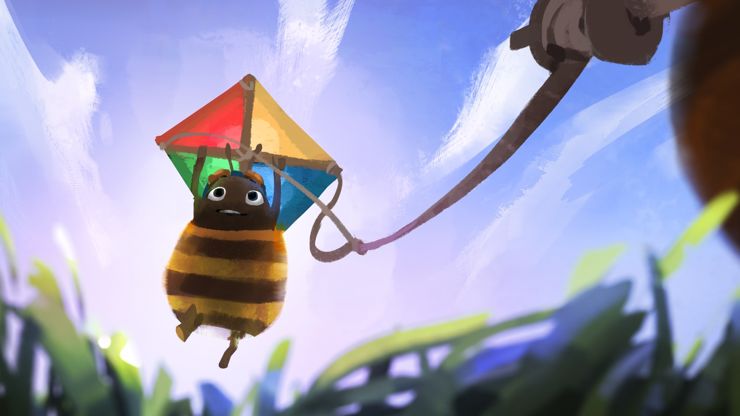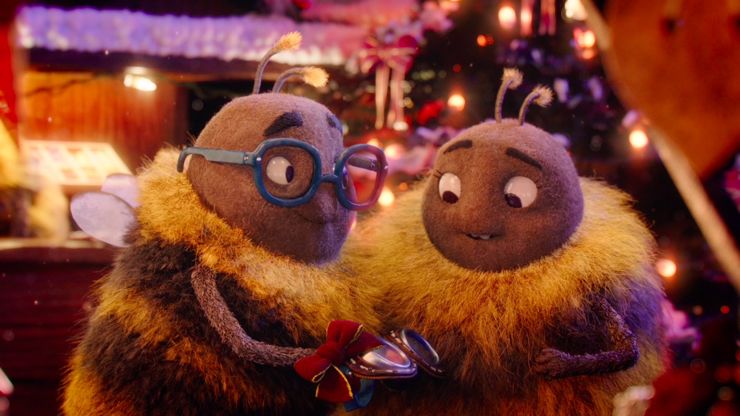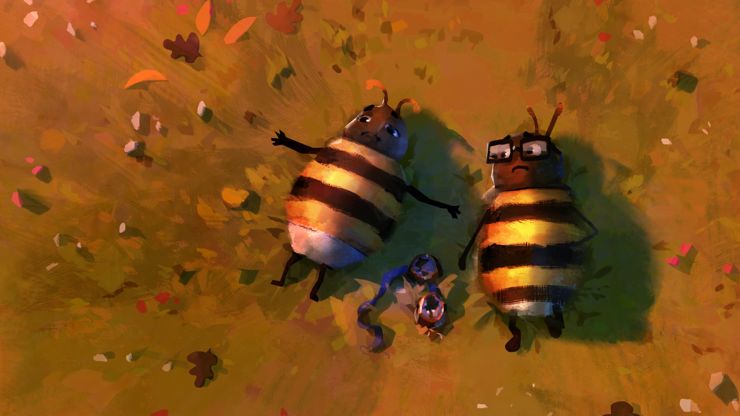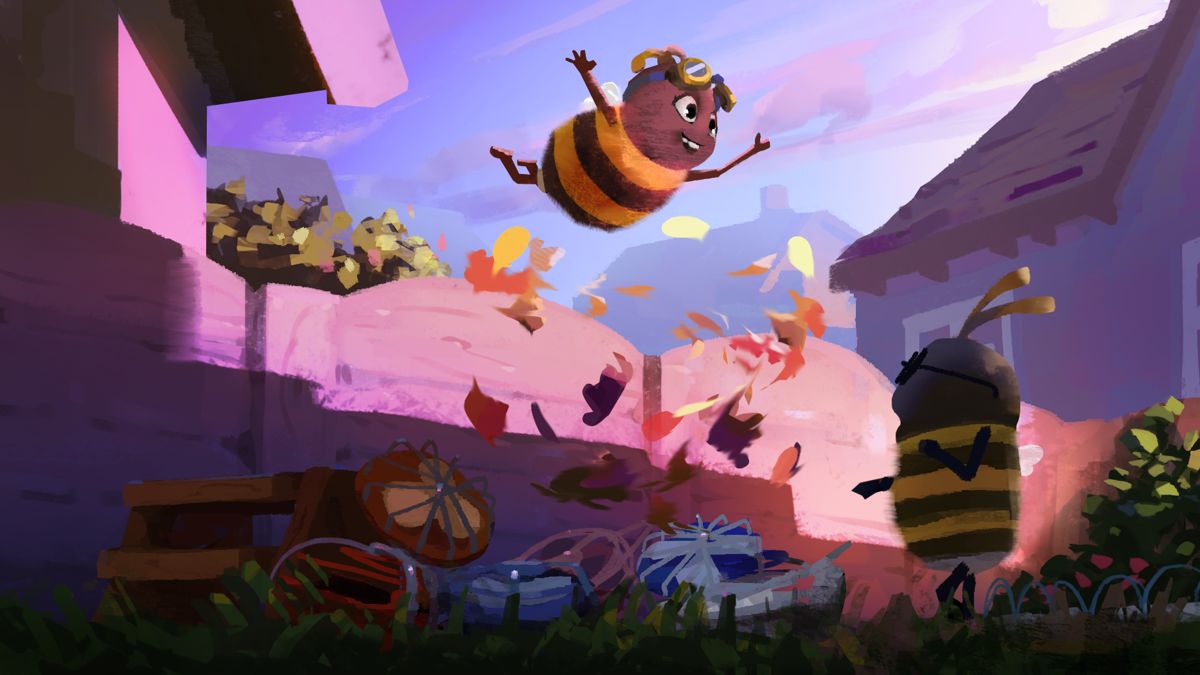Do you Beelieve in magic?
From Passion Pictures, directors Kyra and Constantin share how they balanced heartfelt character design and digital execution in their newest, fluffiest film.
Well known for last year's campaign for Erste, First Christmas, the dynamic directing duo, Kyra and Constantin are back again with another feel-good holiday campaign.
Well-known for their direction of character-driven animation, we wanted to get an insider's view of the amount of work it takes to make something look so tactile and soft. Here's some answers to how the different methods they used helped create a film that was heartwarming, charming, and painstakingly detailed.
How did you design these characters?
We tend to work with a couple of character designers to get a variety of different approaches additional to our own designs. We then picked out the ones we liked the most and worked best within the script and the stop-motion style we were aiming for. It was important to us that they were instantly likable characters.
Can you describe the process to take a character design into 3D rendering?
It is usually quite a long process to get a character from 2D to 3D. It takes a lot of fine-tuning in order to get the same feel to a character as it had in its initial 2D drawing. Especially with fluffy characters, it’s a challenge to get the fur right.
Imperfections are key to make it look real and fluffy.
If it is too long, it hides the expressions, if it is too short, it loses its soft feel. Therefore, we usually start with a model that resembles the overall shape of the character, including the fur-volume. Once the fur is added we then need to shrink down the geometry to preserve the overall volume of the character.
Credits
powered by
- Agency Jung von Matt/Donau/Vienna
- Production Company Passion Animation Studios
- Director Kyra & Constantin
-
-
Unlock full credits and more with a Source + shots membership.
Credits
powered by
- Agency Jung von Matt/Donau/Vienna
- Production Company Passion Animation Studios
- Director Kyra & Constantin
- Account Director/ Agency Producer Katharina Hoeller
- Art Director Michael Nagy
- Copywriter/ Art Director Eva Zefferer
- Copywriter/ Art Director Andreas Putz
- Senior Copywriter/ Art Director Karin Uebelbacher
- Music Mcasso Music
- Animation Director Ferran Casas
- Head of Production Mike Turoff
- Executive Producer/Managing Director Debbie Crosscup
- Producer Anna Cunnington
- Production Assistant Lina Li
- Editor Christina Conradi
- CG Coordinator Suzanne Forward
- CG Supervisor Stuart Hall
- Production Design Samuel Klughertz
- Rigger David Jurine
- Rigger Victor Vinyals
- Rigger Sarah Forest
- Storyboard Artist Kim Nguyen / (Artist)
- Character Design Alexander Dietrich
- Previz/Animation Ines Pagniez
- Previz David Burtle
- Character Modelling Pedro Pereira
- Post Editing Kingsley James Albert Bailey
- Environment Modelling Marco Hakenjos
- Environment Modelling Shaun Rogers
- Animation Rosie Ashford
- FX Darlene Buttner
- FX Kwai Ip
- FX Solene Gaudu
- FX Nacho Doctor
- FX Tyler Daniels
- Lighting & Rendering Paulin Cointot
- Compositing Roberto Garcia
- Compositing Nick Herbert
- Matt/Background Painting David Gibbons
- Colourist Denny Cooper
- VFX Colin Perret
- VFX Supervisor Dave Walker
- Compositor Antoine Foulot
- Head Of CG Jason Nicholas
- Post Producer Stephanie Economides
- Flame Artist Milo Paterson
- Sound Designer Tom Martin
- Lyrics Andreas Putz
- Composer Richard Atkinson
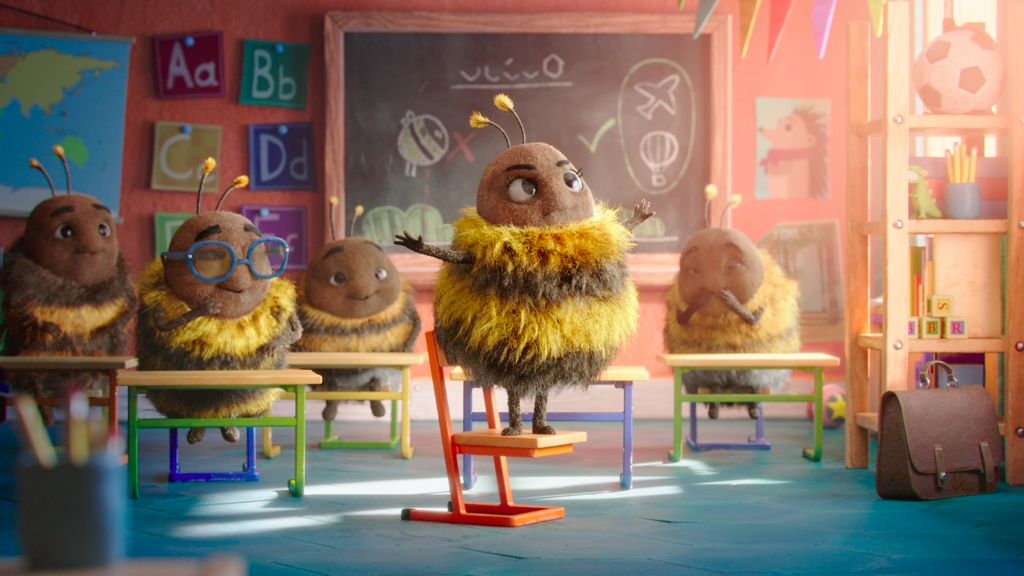
Credits
powered by
- Agency Jung von Matt/Donau/Vienna
- Production Company Passion Animation Studios
- Director Kyra & Constantin
- Account Director/ Agency Producer Katharina Hoeller
- Art Director Michael Nagy
- Copywriter/ Art Director Eva Zefferer
- Copywriter/ Art Director Andreas Putz
- Senior Copywriter/ Art Director Karin Uebelbacher
- Music Mcasso Music
- Animation Director Ferran Casas
- Head of Production Mike Turoff
- Executive Producer/Managing Director Debbie Crosscup
- Producer Anna Cunnington
- Production Assistant Lina Li
- Editor Christina Conradi
- CG Coordinator Suzanne Forward
- CG Supervisor Stuart Hall
- Production Design Samuel Klughertz
- Rigger David Jurine
- Rigger Victor Vinyals
- Rigger Sarah Forest
- Storyboard Artist Kim Nguyen / (Artist)
- Character Design Alexander Dietrich
- Previz/Animation Ines Pagniez
- Previz David Burtle
- Character Modelling Pedro Pereira
- Post Editing Kingsley James Albert Bailey
- Environment Modelling Marco Hakenjos
- Environment Modelling Shaun Rogers
- Animation Rosie Ashford
- FX Darlene Buttner
- FX Kwai Ip
- FX Solene Gaudu
- FX Nacho Doctor
- FX Tyler Daniels
- Lighting & Rendering Paulin Cointot
- Compositing Roberto Garcia
- Compositing Nick Herbert
- Matt/Background Painting David Gibbons
- Colourist Denny Cooper
- VFX Colin Perret
- VFX Supervisor Dave Walker
- Compositor Antoine Foulot
- Head Of CG Jason Nicholas
- Post Producer Stephanie Economides
- Flame Artist Milo Paterson
- Sound Designer Tom Martin
- Lyrics Andreas Putz
- Composer Richard Atkinson
Above: Hanna Bumblebee campaign
Did you choose to make these designs similar or different from last year's ad for Erste?
We were aiming for a similar look to last year’s ad to keep the campaign consistent. Again, we wanted to have a tactile feel to the characters, as if they were little stop-motion figures.
Most of the time, direction is a balance of screen seconds and story beats you want to tell.
We went for some slightly different types of materials for these bumblebees. Their body fur is fluffier, resembling a fake-fur opposed to the felted approach of last year's hedgehog.
How did you make these bees look so fluffy?
Amazing artists who were forced to cuddle fluffy stuffed toys for 12 hours straight over two weeks. In the end it’s mostly a clever combination out of different fur approaches, messiness, and a bit of clumping. Imperfections are key to make it look real and fluffy.
The texture of their faces is also very specific.
It’s a fur layer that is built out of lots of different curly hairs, randomness is important and little frayed hairs that break the silhouette.
Above: Behind-the-scenes designs and finished stills from the film.
Was there a different process to creating the set pieces?
Not if we compare it to last year’s film, but the overall process is a bit different since we try to aim for a miniaturized look for all props and objects. Initially, there is a rough block-out for the object but later on, the level of detail that is added gets quite specific. To get the miniature look right, every object needs to be treated like if it’s made on a very small scale.
We love the haptic feel stop motion has. It anchors the whole world in something more believable and relatable.
Texture cannot simply be added, it always needs to be applied in a way that it looks as if someone painted it onto the model with a tiny brush. This frame of mind results in a slightly imperfect but still detailed look.
How long did the CGI development take?
It felt like a bit over four months but let’s ask Anna, our Producer!
Anna Cunnington: From start to finish, pitch to delivery, a complicated CG job can go through quite a lot of development stages. This particular film, working with client and agency for the second time, came to us during the summer and delivered in time for the Christmas season!
How many CGI artists worked on this project?
Projects like these always have a medium sized crew that grows at certain stages of the production and shrinks down again when the job is at its end. But it's important to have key people always on it and one of the most important ones was Stuart Hall who was our CG lead for this year’s film, as well as Ferran Casas our Animation Lead who always brings such wonderful polished performances...But there were so many other amazing artists, producers and coordinators on it which we would love to credit here.
Above: Behind-the-scenes designs and finished stills from the film.
Why did you choose to imitate stop motion? What does that style bring to the film?
We love the haptic feel stop motion has. It anchors the whole world in something more believable and relatable. Of course, some may wonder why we didn’t produce this as a stop motion film from the start, but the answer is simply we don’t know why we choose CGI over stop-motion! Maybe we’ll make the next one with physical models!
Did you feel pressure to match the success of last year’s video?
Not at all! It's always lovely to work with this kind of “motivation” in the back of your mind. 😂
But in truth, of course we felt the pressure. Luckily, we were telling a story with different characters in a different setting which helped us to tackle the project as something new rather than a follow-up to last years’ film.
How did you develop the story?
We received the script early in the pitch phase, where we took the initial idea and tried to make it work in the timeframe. Most of the time direction is a balance of screen seconds and story beats you want to tell.
If you could craft one character from either #HannaBumblebee or First Christmas as a toy, which one would you choose?
That’s a hard question! We love all of our children equally, but I think when it comes to cuddling, we have to go with the bumblebee characters! (Inconveniently, a spiky hedgehog always needs a layer of foam pieces before he can be hugged!)
)
